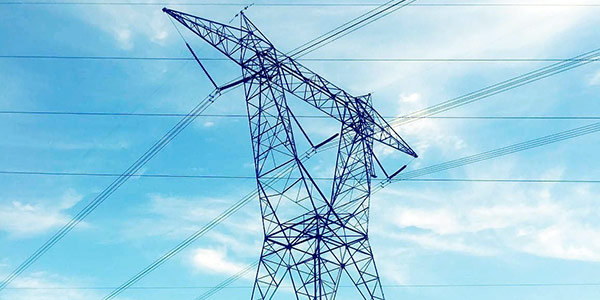By Amanda Durish Cook
CARMEL, Ind. — MISO stakeholders last week debated whether the RTO is being too conservative in anticipating industry shifts in its new futures scenarios for transmission planning.
MISO in October released a trio of new 20-year future scenarios to assist transmission planning for the 2021 Transmission Expansion Plan (MTEP 21). (See MISO Sets Course for New Futures.)
Now, the RTO has revised the scenarios’ names to Announced Plans, Accelerated Fleet Change and Advanced Electrification. It has also upped the age at which coal units retire by at least four years in each future and reduced carbon reductions from 50% to 40% in the Accelerated Fleet Change future.
MISO also cut its electrification predictions in both the Advanced Electrification (from 70% to 40% energy growth potential) and Accelerated Fleet Change futures (from 40% to 20%).
Finally, the Announced Plans future now contains an 85% probability instead of total confidence in changes identified in utilities’ integrated resource plans, including coal retirements, new gas-fired generation and emission-reduction targets.
At a special workshop Thursday, MISO Planning Manager Tony Hunziker said the changes were made after the RTO evaluated feedback from stakeholders.
“There was an emphasis on having more conservative assumptions,” he said.
A Question of Coal Retirements
Xcel Energy’s Drew Siebenaler pointed out that his company plans to end all coal use in the MISO footprint by 2030. He also said the RTO should consider that it is often expensive to keep aging coal plants cycling.
“What we’ve learned is it takes a ton of capital to keep these units [operating as reliability]-must-run. I’d like to also see how they’re going to be dispatched,” he told RTO staff.
Veriquest Group’s David Harlan said MISO wasn’t clear on what generation would replace retiring coal units. Hunziker said it would use the Electric Power Research Institute’s Electric Generation Expansion Analysis System (EGEAS) to predict generation expansion.
Clean Grid Alliance’s Natalie McIntire said it didn’t make sense to extend the lifespan of coal plants from 30 years to 35 in the Advanced Electrification future. She said coal use is ending, whether or not members want it to occur.
“I understand that there are a lot of stakeholders that are uncomfortable with an aggressive future. But it’s not MISO’s job to predict the future; it’s to create a reasonable range of plausible futures. We’re not trying to get everyone comfortable with every future. I don’t think it’s reasonable not to have an aggressive future in there, given that all of the [changes predicted] in MISO’s existing futures have been exceeded,” she said.
Comfort not the Goal
Megan Wisersky of Madison Gas and Electric said she agreed that stakeholders shouldn’t be at ease with the scenarios outlined in the futures.
“It’s not our job to make sure that everyone is comfortable. We really need futures that are stretches — that contemplate technological change, political change … that in late 2019, we can’t fathom,” she said.
Wisersky said MISO should craft futures using more intense industry shifts so it doesn’t again use obsolete predictions. The RTO plans to use its existing four futures one last time for the 2020 cycle of its transmission planning.
“It just seems like MISO has scaled back on these in response to a few stakeholders’ comments. These are supposed to be bookends,” McIntire said.
Minnesota Public Utilities Commission staff member Hwikwon Ham suggested MISO assume a 35-year coal plant age retirement in all three futures, then update the ages as utilities announce retirements.
Stakeholders also said MISO should take utilities’ IRP plans at their word, or even assume that utilities will exceed their IRP goals ahead of time. Some suggested that for utilities to publicly announce retirements and not see them through may constitute fraud.
McIntire asked if MISO would include corporate commitments to renewable energy and carbon-cutting in any of its futures.
“We considered that. We didn’t want to double-count them,” Hunziker said.
He said MISO would rely on load-serving entities to include that information in their load forecasting. However, he also said it might consider reaching out to multistate corporations whose renewable goals might be hard to pin down on a single-utility basis.
After MISO revealed its initial futures proposal, the Union of Concerned Scientists’ Sam Gomberg blogged that they were the result of the RTO “lean[ing] into the undeniable transition towards renewable energy resources, emerging technologies like battery storage and the growing momentum behind decarbonizing our economy.”
Gomberg said the new futures are “essential to ensure a modern grid is ultimately ready to support a clean and reliable electricity supply.”
“MISO’s job isn’t easy — making investments now to prepare for an uncertain future. MISO can’t create our clean energy future — that’s up to us as consumers to demand. But MISO, through its function as the regional grid operator, can either complement or hinder our progress. MISO’s proposed revamp of its planning process is a strong step in the right direction to ensure our electricity grid is ready for our clean energy future,” Gomberg said.
Hunziker invited more stakeholder opinions on the three futures. MISO will continue developing the futures scenarios through January, with the definitions completed in either February or March.





